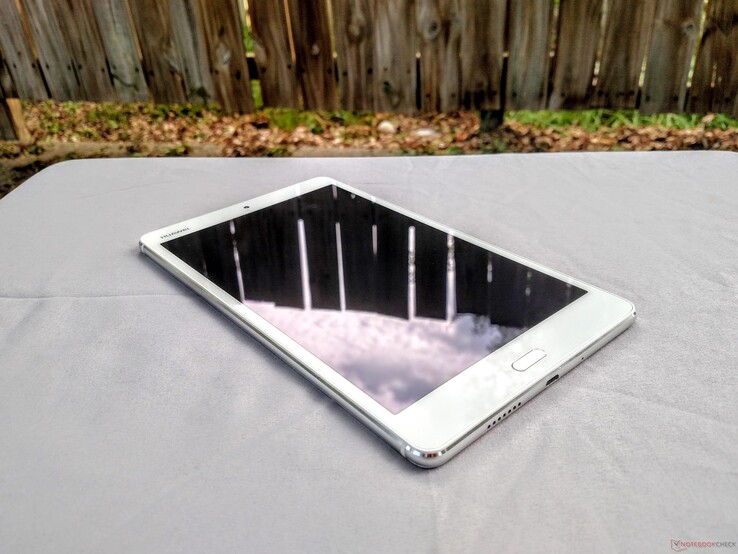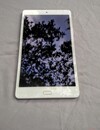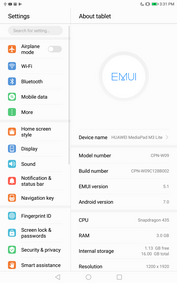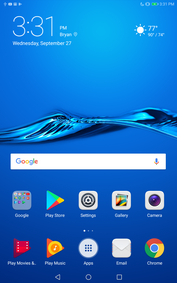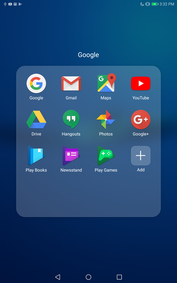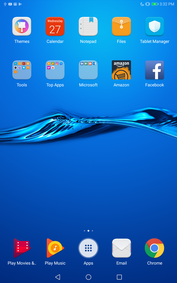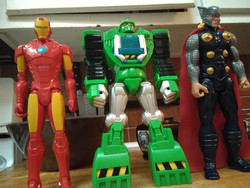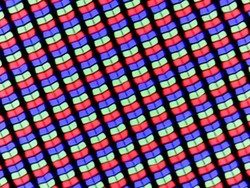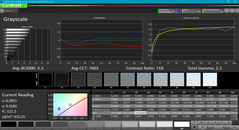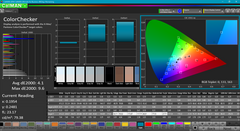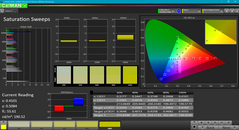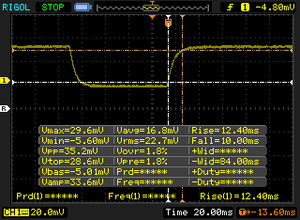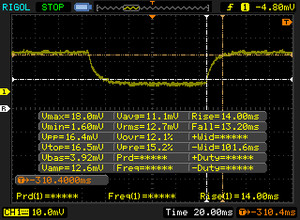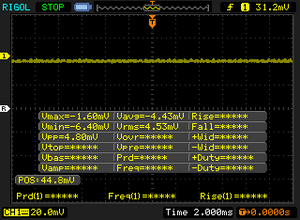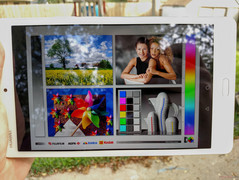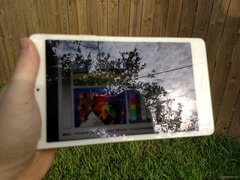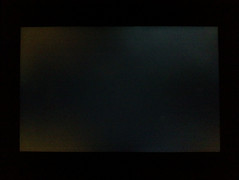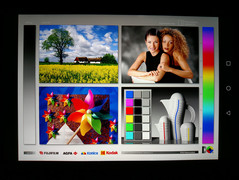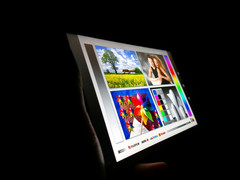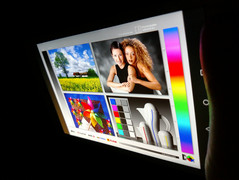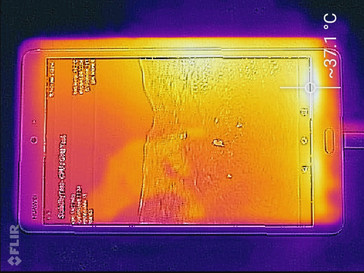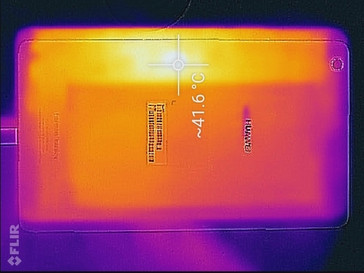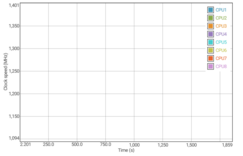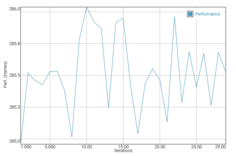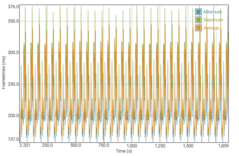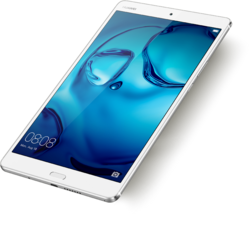Huawei MediaPad M3 Lite 8 Tablet Review
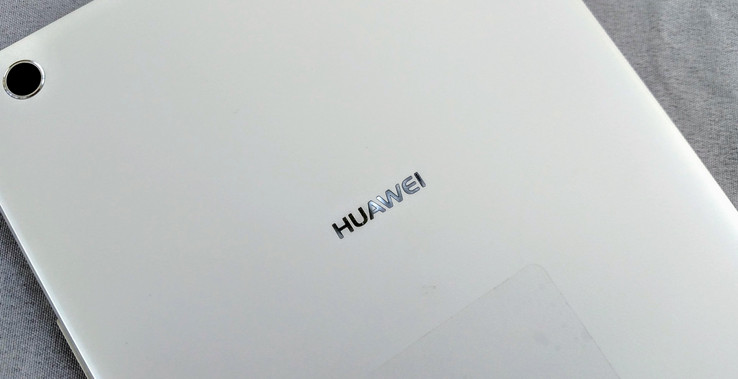
Huawei is known for creating well-built mobile devices at an affordable price. This is certainly the case with its latest tablet, the MediaPad M3 Lite 8. We recently reviewed the 10.1" variant of the MediaPad M3 Lite and found it to be a capable media-centric device that left us wanting in terms of raw power. The 8" model under review today is very similar to its bigger brother; our device has the same 1920x1200 resolution, the same Qualcomm Snapdragon 435 SoC, and the same EMUI 5.1 (which is built on Android 7.0 Nougat).
The MediaPad M3 Lite 8 is an interesting blend of the budget and premium markets. While its innards are admittedly low-tier silicon, the body of the device is elegantly crafted from machined aluminum, giving the case a high-class look and feel. While it may look the part of a flagship, everyday use lags behind even mid-range tablets currently on the market. However, for a casual user, the MediaPad M3 Lite 8 may be an affordable alternative to other modern tablets.
Huawei offers the M3 Lite 8 in both WWAN and WiFi-only variants. Our unit lacks an LTE radio, so we will omit the usual sections on GPS and WWAN communication. In addition, the virtual keyboard and handling experience are similar to the MediPad M3 Lite 10; as such, those sections will also be omitted. Please refer to that review for more information.
In order to get a broad view of the capabilities of the M3 Lite 8, we will also look a wide array of other smaller Android tablets, such as the ZenPad 3 8.0 from Asus, the Amazon Fire HD 8, and Samsung's Galaxy Tab A7. We will also compare perhaps the most popular small tablet in the United States, the venerable iPad Mini (4th generation) from Apple. Let's dive in.
Case
As mentioned, the case is a beauty to behold. Metal and glass are the only materials here, with nary a piece of plastic in sight. The chamfered aluminum rails surrounding the chassis give a sense of refinement to the device, and the matte finish across the back of the device is highly resistant to smudges and fingerprints. Overall, the device doesn't look the part of a budget device and rivals the appearance of the upper echelon of tablets.
Haptics are also good, but leave room for improvement. At 310 grams, the device has a satisfying heft to it without feeling too heavy in the hands. The chassis also feels cool and very nice when held, and the materials aren't as slippery as other metal- or glass-backed tablets. Stability is a sticking point, though. The body flexes a bit too much for comfort, especially when twisted. The chassis feels firm, but there is visible warping along the edges when direct pressure is applied. This contortion is surprising given the small footprint and metal body. While users shouldn't notice any unwanted deformation during normal use, leaving the tablet in a bag filled with heavy objects may lead to a slight bend over time.
The footprint of the MediaPad M3 Lite 8 is part and parcel for an 8-inch tablet. It sits at the lighter end of the spectrum, weighing a mere 6 grams more than the iPad Mini 4 and about 10 grams less than the ZenPad 3 8.0. The dimensions are also similar to other tablets with a 16:9 or 16:10 aspect ratio. The iPad Mini 4 and ZenPad 3 are wider but not as long, owing mainly to the 4:3 aspect ratio of their screens. All said, the M3 Lite 8 fits nicely in the hands and isn't exhausting to hold.
Connectivity
The MediPad M3 Lite 8 doesn't do much to innovate in terms of tablet connectivity. While the 3 GB of RAM should be more than adequate for most users, the 16 GB of onboard storage may be too limiting for some. Thankfully, storage can be upgraded via the microSD card slot. Units that are compatible with cellular networks can also insert a SIM card in the same tray. The LTE model is also equipped with a total of 32 GB of onboard storage, which power users will appreciate.
The exterior ports are standard mobile device fare. Users will find a micro USB 2.0 port, speaker, and microphone along the bottom, the power button, volume rocker, and microSD card tray on the right edge, and another speaker and 3.5 mm combo audio jack on the top.
Communication
WiFi connectivity is a major weakness of the M3 Lite 8. Transmit and receive speeds are abysmal, hovering around 45 MBit/s. Compared to other tablets on the market, the M3 Lite 8 is just plain slow when it comes to wireless connection speeds. In daily use, websites to take a second or two longer to load than other tablets and mobile devices. On the plus side, WiFi connections are stable and strong.
Software & Accessories
The MediaPad M3 Lite 8 runs EMUI 5.1, which is Huawei's skinned version of Android 7.0 Nougat. The experience is by and large very smooth with mostly aesthetic tweaks. Icons and menus have a distinctive flair to them that differentiates the user interface from Stock Android in a subtle and appealing manner. The overall look and feel blend the granular control of Android with the smoother interface and aesthetic of iOS, especially in settings menus. The operating system is unmistakably Android, but feels a bit more coherent and refined, especially compared to the skins of other Android OEMs.
While the interface improves the experience, the copious amounts of bloatware are a major detraction. In addition to Google's suite of apps that come installed on most Android devices, there are 26 additional apps pre-loaded on the tablet. Some (like the calculator, calendar, and weather apps) are merely stock apps expected to be on a mobile device with a Huawei skin, but others are third-party apps from companies like Amazon, Microsoft, and Facebook. Most of these can be uninstalled, but the process is a tedious addition.
There are also a few Huawei-made apps, like HiCare and Kids Corner, that cannot be uninstalled. While some users may see these custom apps as beneficial, many will find them redundant and will never open them.
Huawei includes a wall adapter, micro USB cable, and microSD/SIM tray ejector tool in the box.
Cameras
The camera loadout in the MediaPad M3 Lite 8 is the exact same as that of its bigger brother: 8 MP sensors are used for both the rear- and front-facing cameras. As far as tablets go, both cameras are fairly impressive. The "selfie" camera is particularly noteworthy. Colors are accurate and details are fairly sharp. Shadows introduce some noise, but images are clear and punchy.
The main camera is also better than average. In good lighting conditions, image quality approaches that of an entry level DSLR (in this case, a Nikon D3200). Details are crisp but colors tend to wash out. Over sharpening is present around edges, which creates some undesirable aliasing. This is especially noticeable at high-contrast, rounded edges (e.g., Scene 3, near the left base of the green slide). The camera also struggles with low lighting, introducing lots of digital noise and blurring focus. That said, considering tablet photography hasn't taken off, the cameras on the M3 Lite 8 are satisfactory and will suffice in a pinch.
Display
The MediaPad M3 Lite 8 shares the same 1920x1200 display resolution as the 10-inch variant, although the smaller size makes for a sharper image. The 16:10 aspect ratio makes for an easier handling experience than other 16:9 tablets, and documents read more easily on the wider display. Screen brightness averages about 402 nits, which is reasonably bright and usable in most indoor lighting conditions. The backlight is even across the screen with no noticeable bright spots. Contrast is a bit low at 731:1 but isn't terribly distracting.
| |||||||||||||||||||||||||
Brightness Distribution: 92 %
Center on Battery: 409.1 cd/m²
Contrast: 731:1 (Black: 0.56 cd/m²)
ΔE ColorChecker Calman: 4.1 | ∀{0.5-29.43 Ø4.78}
ΔE Greyscale Calman: 5.3 | ∀{0.09-98 Ø5}
Gamma: 2.2
CCT: 7603 K
| Huawei Mediapad M3 Lite 8 IPS, IPS, 8", 1920x1200 | Amazon Fire HD 8 2017 10-point Multitouch, IPS, 8", 1280x800 | Apple iPad Mini 4 Retina Display, IPS, 7.9", 2048x1536 | Huawei MediaPad M3 8.4 inch IPS, 8.4", 2560x1600 | Samsung Galaxy Tab S3 SM-T825 Super AMOLED, 9.7", 2048x1526 | Samsung Galaxy Tab A7 2016 IPS, 7", 1280x800 | Asus ZenPad 3 8.0 Z581KL-1A001A IPS, 7.9", 2048x1536 | |
|---|---|---|---|---|---|---|---|
| Display | |||||||
| Display P3 Coverage (%) | 83.9 | ||||||
| sRGB Coverage (%) | 99.1 | ||||||
| AdobeRGB 1998 Coverage (%) | 94 | ||||||
| Response Times | -16% | -89% | 86% | -112% | -29% | ||
| Response Time Grey 50% / Grey 80% * (ms) | 27.2 ? | 35.2 ? -29% | 59 ? -117% | 4 ? 85% | 69 ? -154% | 31 ? -14% | |
| Response Time Black / White * (ms) | 22.4 ? | 22.8 ? -2% | 36 ? -61% | 3.2 ? 86% | 38 ? -70% | 32 ? -43% | |
| PWM Frequency (Hz) | 221.2 ? | ||||||
| Screen | -21% | 13% | -0% | 34% | -11% | 11% | |
| Brightness middle (cd/m²) | 409.1 | 419 2% | 411 0% | 460 12% | 452 10% | 358 -12% | 386 -6% |
| Brightness (cd/m²) | 402 | 412 2% | 421 5% | 445 11% | 468 16% | 344 -14% | 364 -9% |
| Brightness Distribution (%) | 92 | 91 -1% | 91 -1% | 90 -2% | 82 -11% | 92 0% | 88 -4% |
| Black Level * (cd/m²) | 0.56 | 0.39 30% | 0.58 -4% | 0.45 20% | 0.37 34% | 0.57 -2% | |
| Contrast (:1) | 731 | 1074 47% | 709 -3% | 1022 40% | 968 32% | 677 -7% | |
| Colorchecker dE 2000 * | 4.1 | 8.5 -107% | 2.15 48% | 6.2 -51% | 1.8 56% | 5.3 -29% | 3.3 20% |
| Colorchecker dE 2000 max. * | 9.6 | 13.8 -44% | 10.5 -9% | 4 58% | 20.2 -110% | 7.1 26% | |
| Greyscale dE 2000 * | 5.3 | 10.3 -94% | 2.72 49% | 6.5 -23% | 1.2 77% | 4.7 11% | 1.7 68% |
| Gamma | 2.2 100% | 2.6 85% | 2.29 96% | 2.33 94% | 2.11 104% | 2.44 90% | 2.42 91% |
| CCT | 7603 85% | 6216 105% | 7012 93% | 8056 81% | 6500 100% | 7222 90% | 6397 102% |
| Color Space (Percent of AdobeRGB 1998) (%) | 82.32 | ||||||
| Color Space (Percent of sRGB) (%) | 99.06 | ||||||
| Total Average (Program / Settings) | -19% /
-20% | 13% /
13% | -45% /
-18% | 60% /
47% | -62% /
-31% | -9% /
3% |
* ... smaller is better
Colors are fairly accurate. A DeltaE of 4.1 is a bit too high for professional video and photo editing, but since the tablet is aimed squarely at media consumption, most users will find colors vibrant and punchy. Colors and greys aren't as accurate as some premium tablets, like the iPad Mini 4, but are more than good enough for consumer use, especially at the price point. PWM is not present, and the screen is highly responsive to shifts in color. Overall, the screen is bright, even, and colorful and should make for an enjoyable viewing experience.
Display Response Times
| ↔ Response Time Black to White | ||
|---|---|---|
| 22.4 ms ... rise ↗ and fall ↘ combined | ↗ 12.4 ms rise | |
| ↘ 10 ms fall | ||
| The screen shows good response rates in our tests, but may be too slow for competitive gamers. In comparison, all tested devices range from 0.1 (minimum) to 240 (maximum) ms. » 49 % of all devices are better. This means that the measured response time is worse than the average of all tested devices (20.2 ms). | ||
| ↔ Response Time 50% Grey to 80% Grey | ||
| 27.2 ms ... rise ↗ and fall ↘ combined | ↗ 14 ms rise | |
| ↘ 13.2 ms fall | ||
| The screen shows relatively slow response rates in our tests and may be too slow for gamers. In comparison, all tested devices range from 0.165 (minimum) to 636 (maximum) ms. » 36 % of all devices are better. This means that the measured response time is better than the average of all tested devices (31.6 ms). | ||
Screen Flickering / PWM (Pulse-Width Modulation)
| Screen flickering / PWM not detected | |||
In comparison: 53 % of all tested devices do not use PWM to dim the display. If PWM was detected, an average of 8111 (minimum: 5 - maximum: 343500) Hz was measured. | |||
The brightness sensor on the M3 Lite 8 is quick and very reliable. Changes in lighting prompt a near-immediate response in either dimming or brightening the display. The screen falls fairly dim in low-light environments and is set to the maximum brightness outdoors. Unfortunately, the highly reflective finish on the display makes outdoor use next to impossible. While the screen is visible under shade, reflections on the front glass render the screen practically useless in direct sunlight.
Viewing angles are excellent (owing to the IPS panel). Colors remain accurate without any shift and text remains legible when viewed from an angle.
Performance
The MediaPad M3 Lite 8 sports Qualcomm's Snapdragon 435 SoC. The 435 is a lower-tiered CPU typically seen in budget phones and tablets. While it boasts 8 ARM Cortex A53 cores, they are clocked at a paltry 1.4 GHz. Performance is subsequently lackluster but should be enough for everyday use. While not the slowest piece of silicon in our roundup, it's still a far cry from the more robust SoCs in higher-end tablets and falls just below the middle of the pack in benchmarking. Users in need of more processing punch should look to the more powerful offerings from Qualcomm or the MediaPad M3 8.4, which is powered by Huawei's own Kirin 950.
Graphics are handled by the onboard Adreno 505, also from Qualcomm. GPU performance mimics that of the CPU. Casual games are definitely playable, but more demanding 3D titles are a bit out of reach here. Settings will need to be reduced when possible; even then, expectations should be well-tempered.
| AnTuTu v6 - Total Score | |
| Samsung Galaxy Tab S3 SM-T825 | |
| Huawei MediaPad M3 8.4 inch | |
| Asus ZenPad 3 8.0 Z581KL-1A001A | |
| Huawei Mediapad M3 Lite 8 | |
| Amazon Fire HD 8 2017 | |
| Samsung Galaxy Tab A7 2016 | |
| GFXBench 3.0 | |
| on screen Manhattan Onscreen OGL | |
| Samsung Galaxy Tab S3 SM-T825 | |
| Apple iPad Mini 4 | |
| Asus ZenPad 3 8.0 Z581KL-1A001A | |
| Huawei MediaPad M3 8.4 inch | |
| Huawei Mediapad M3 Lite 8 | |
| Amazon Fire HD 8 2017 | |
| 1920x1080 1080p Manhattan Offscreen | |
| Samsung Galaxy Tab S3 SM-T825 | |
| Apple iPad Mini 4 | |
| Asus ZenPad 3 8.0 Z581KL-1A001A | |
| Huawei MediaPad M3 8.4 inch | |
| Huawei Mediapad M3 Lite 8 | |
| Amazon Fire HD 8 2017 | |
| GFXBench 3.1 | |
| on screen Manhattan ES 3.1 Onscreen | |
| Samsung Galaxy Tab S3 SM-T825 | |
| Asus ZenPad 3 8.0 Z581KL-1A001A | |
| Amazon Fire HD 8 2017 | |
| Huawei Mediapad M3 Lite 8 | |
| Huawei MediaPad M3 8.4 inch | |
| 1920x1080 Manhattan ES 3.1 Offscreen | |
| Samsung Galaxy Tab S3 SM-T825 | |
| Asus ZenPad 3 8.0 Z581KL-1A001A | |
| Huawei MediaPad M3 8.4 inch | |
| Huawei Mediapad M3 Lite 8 | |
| Amazon Fire HD 8 2017 | |
| GFXBench | |
| on screen Car Chase Onscreen | |
| Samsung Galaxy Tab S3 SM-T825 | |
| Asus ZenPad 3 8.0 Z581KL-1A001A | |
| Huawei MediaPad M3 8.4 inch | |
| Huawei Mediapad M3 Lite 8 | |
| 1920x1080 Car Chase Offscreen | |
| Samsung Galaxy Tab S3 SM-T825 | |
| Asus ZenPad 3 8.0 Z581KL-1A001A | |
| Huawei MediaPad M3 8.4 inch | |
| Huawei Mediapad M3 Lite 8 | |
| PCMark for Android | |
| Work 2.0 battery life | |
| Samsung Galaxy Tab S3 SM-T825 | |
| Computer Vision score | |
| Samsung Galaxy Tab S3 SM-T825 | |
| Huawei Mediapad M3 Lite 8 | |
| Storage score | |
| Huawei Mediapad M3 Lite 8 | |
| Samsung Galaxy Tab S3 SM-T825 | |
| Work 2.0 performance score | |
| Samsung Galaxy Tab S3 SM-T825 | |
| Huawei Mediapad M3 Lite 8 | |
| Amazon Fire HD 8 2017 | |
| Work performance score | |
| Asus ZenPad 3 8.0 Z581KL-1A001A | |
| Samsung Galaxy Tab S3 SM-T825 | |
| Huawei MediaPad M3 8.4 inch | |
| Huawei Mediapad M3 Lite 8 | |
| Amazon Fire HD 8 2017 | |
| Samsung Galaxy Tab A7 2016 | |
| Geekbench 4.4 | |
| Compute RenderScript Score | |
| Samsung Galaxy Tab S3 SM-T825 | |
| 64 Bit Multi-Core Score | |
| Samsung Galaxy Tab S3 SM-T825 | |
| Huawei Mediapad M3 Lite 8 | |
| Amazon Fire HD 8 2017 | |
| 64 Bit Single-Core Score | |
| Samsung Galaxy Tab S3 SM-T825 | |
| Huawei Mediapad M3 Lite 8 | |
| Amazon Fire HD 8 2017 | |
Web browsing, for the most part, is smooth and enjoyable. Most websites load quickly, but heavier or content-rich sites will take a few seconds more. This is likely due to the poor connectivity speeds offered by the wireless module. Overall, the web experience is on par with other budget-oriented devices. Most users will find no fault here.
| JetStream 1.1 - Total Score | |
| Huawei MediaPad M3 8.4 inch | |
| Asus ZenPad 3 8.0 Z581KL-1A001A | |
| Samsung Galaxy Tab S3 SM-T825 | |
| Amazon Fire HD 8 2017 | |
| Huawei Mediapad M3 Lite 8 | |
| Samsung Galaxy Tab A7 2016 | |
| WebXPRT 2015 - Overall | |
| Apple iPad Mini 4 | |
| Huawei MediaPad M3 8.4 inch | |
| Samsung Galaxy Tab S3 SM-T825 | |
| Asus ZenPad 3 8.0 Z581KL-1A001A | |
| Huawei Mediapad M3 Lite 8 | |
| Amazon Fire HD 8 2017 | |
| Samsung Galaxy Tab A7 2016 | |
* ... smaller is better
Storage speeds are interesting. Reads from the internal flash memory are fairly quick and shouldn't leave users waiting long for apps or videos to load. Writes, on the other hand, are sluggish, especially when compared to other devices. The overall impression is mixed and places the M3 Lite 8 a bit lower than average.
| Huawei Mediapad M3 Lite 8 16 GB eMMC Flash | Amazon Fire HD 8 2017 16 GB eMMC Flash | Huawei MediaPad M3 8.4 inch 32 GB eMMC Flash | Samsung Galaxy Tab S3 SM-T825 32 GB eMMC Flash | Samsung Galaxy Tab A7 2016 8 GB eMMC Flash | Asus ZenPad 3 8.0 Z581KL-1A001A 32 GB eMMC Flash | |
|---|---|---|---|---|---|---|
| AndroBench 3-5 | 25% | 104% | 106% | -23% | 53% | |
| Sequential Write 256KB SDCard (MB/s) | 14.6 | 34.15 134% | 23.52 61% | 58.6 301% | 18.4 26% | 20.61 41% |
| Sequential Read 256KB SDCard (MB/s) | 87.7 | 51.1 -42% | 61.7 -30% | 76.4 -13% | 21.41 -76% | 39.62 -55% |
| Sequential Write 256KB (MB/s) | 38.01 | 47.23 24% | 117.2 208% | 87.6 130% | 28.95 -24% | 116.6 207% |
| Sequential Read 256KB (MB/s) | 135.1 | 159.1 18% | 249.7 85% | 288.6 114% | 65.9 -51% | 252.3 87% |
| Random Write 4KB (MB/s) | 7.64 | 11.51 51% | 31.35 310% | 13.13 72% | 9.55 25% | 6.91 -10% |
| Random Read 4KB (MB/s) | 35 | 21.55 -38% | 32.04 -8% | 45.82 31% | 21.95 -37% | 52 49% |
Emissions
Temperature
The low-powered Snapdragon 435 has a benefit. Heat output is minimal thanks to its low clock speed, and this results in a fairly cool handling experience, even under load. There is a hot spot on the middle-left portion of the backside, but since users hands will likely fall on the top and bottom of the device (when held in landscape), this shouldn't present much of an issue. When gaming or performing very demanding tasks, the device will get slightly warm, which may result in damp palms. This will only occur when the tablet is under stress; everyday browsing and video streaming do not cause the tablet to warm up.
The device is able to maximize performance under extended stress as well. Using the GFXBench Battery Test to run the demanding Manhattan benchmark 30 times consecutively, we see no definitive pattern of throttling. Though the silicon may be slow, it is steady.
(+) The maximum temperature on the upper side is 37 °C / 99 F, compared to the average of 33.7 °C / 93 F, ranging from 20.7 to 53.2 °C for the class Tablet.
(±) The bottom heats up to a maximum of 42.2 °C / 108 F, compared to the average of 33.2 °C / 92 F
(+) In idle usage, the average temperature for the upper side is 28.8 °C / 84 F, compared to the device average of 30 °C / 86 F.
Speakers
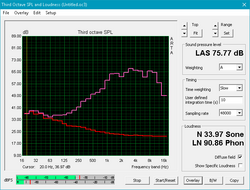
With a name like MediaPad, media consumption is understandably the primary focus of the device. Thankfully, the dual stereo speakers are mostly up to the task. Unfortunately, their small size leaves some holes in the overall sound landscape. Bass is notably lacking and weak; sound lacks punch and doesn't have much body. Mids and highs, on the other hand, are crystal clear and fairly loud. Sounds also remain distortion-free, even at maximum volume. Voices are very clear and music is pleasant, if thin. Overall, the speakers are above average and much better than what most other sub-$200 tablets offer.
Huawei Mediapad M3 Lite 8 audio analysis
(±) | speaker loudness is average but good (75.8 dB)
Bass 100 - 315 Hz
(-) | nearly no bass - on average 18.4% lower than median
(+) | bass is linear (4.6% delta to prev. frequency)
Mids 400 - 2000 Hz
(±) | reduced mids - on average 5.9% lower than median
(±) | linearity of mids is average (7.6% delta to prev. frequency)
Highs 2 - 16 kHz
(±) | higher highs - on average 7.4% higher than median
(+) | highs are linear (6.9% delta to prev. frequency)
Overall 100 - 16.000 Hz
(-) | overall sound is not linear (30.3% difference to median)
Compared to same class
» 89% of all tested devices in this class were better, 3% similar, 8% worse
» The best had a delta of 7%, average was 20%, worst was 129%
Compared to all devices tested
» 88% of all tested devices were better, 3% similar, 9% worse
» The best had a delta of 4%, average was 24%, worst was 134%
Samsung Galaxy Tab A7 2016 audio analysis
(+) | speakers can play relatively loud (87.8 dB)
Bass 100 - 315 Hz
(-) | nearly no bass - on average 35.9% lower than median
(±) | linearity of bass is average (10.6% delta to prev. frequency)
Mids 400 - 2000 Hz
(+) | balanced mids - only 4.6% away from median
(+) | mids are linear (5.2% delta to prev. frequency)
Highs 2 - 16 kHz
(+) | balanced highs - only 3.9% away from median
(+) | highs are linear (6.4% delta to prev. frequency)
Overall 100 - 16.000 Hz
(±) | linearity of overall sound is average (23.9% difference to median)
Compared to same class
» 74% of all tested devices in this class were better, 6% similar, 20% worse
» The best had a delta of 7%, average was 20%, worst was 129%
Compared to all devices tested
» 71% of all tested devices were better, 7% similar, 23% worse
» The best had a delta of 4%, average was 24%, worst was 134%
Frequency Comparison (Checkbox selectable!)
Graph 1: Pink Noise 100% Vol.; Graph 2: Audio off
Energy Management
Power Consumption
The Snapdragon 435 is known to be a power-sipping SoC focused on low energy consumption. Surprisingly, our device does not reflect this design. Despite its low power rating, the 435 in our tablet pulls significantly more energy than other tablets equipped with much more powerful processors. It also pulls more than the larger MediaPad M3 Lite 10, which has the same SoC beating at its heart. These readings may indicate a fluke with our particular review unit; the Snapdragon 435 is usually on the lower end of power consumption.
| Off / Standby | |
| Idle | |
| Load |
|
Key:
min: | |
| Huawei Mediapad M3 Lite 8 435, Adreno 505, 16 GB eMMC Flash, IPS, 1920x1200, 8" | Amazon Fire HD 8 2017 MT8163 V/B 1.3 GHz, Mali-T720, 16 GB eMMC Flash, IPS, 1280x800, 8" | Apple iPad Mini 4 A8, PowerVR GX6450, 64 GB SSD, IPS, 2048x1536, 7.9" | Huawei MediaPad M3 8.4 inch Kirin 950, Mali-T880 MP4, 32 GB eMMC Flash, IPS, 2560x1600, 8.4" | Samsung Galaxy Tab A7 2016 SC7731, Mali-400 MP2, 8 GB eMMC Flash, IPS, 1280x800, 7" | Asus ZenPad 3 8.0 Z581KL-1A001A 650 MSM8956, Adreno 510, 32 GB eMMC Flash, IPS, 2048x1536, 7.9" | Huawei MediaPad M3 Lite 435, Adreno 505, 32 GB eMMC Flash, IPS, 1920x1200, 10.1" | |
|---|---|---|---|---|---|---|---|
| Power Consumption | 53% | 39% | 31% | 46% | 37% | 34% | |
| Idle Minimum * (Watt) | 4.02 | 0.99 75% | 0.8 80% | 1.51 62% | 1.91 52% | 1.01 75% | 1.45 64% |
| Idle Average * (Watt) | 6 | 2.74 54% | 3.6 40% | 3.64 39% | 3.59 40% | 2.71 55% | 4.44 26% |
| Idle Maximum * (Watt) | 6.64 | 2.83 57% | 3.9 41% | 3.68 45% | 4.06 39% | 2.75 59% | 4.61 31% |
| Load Average * (Watt) | 7.34 | 4.51 39% | 6.1 17% | 6.95 5% | 4.29 42% | 7.28 1% | 6.21 15% |
| Load Maximum * (Watt) | 9.6 | 5.69 41% | 8 17% | 9.11 5% | 4.31 55% | 10.02 -4% | 6.33 34% |
* ... smaller is better
Battery Life
One area where the MediaPad M3 Lite 8 truly excels is battery life. The 4800 mAh looks small on paper, but the low-powered Snapdragon 435 sips at battery life to produce impressive runtimes. The M3 Lite 8 pulls ahead of its competition by a wide margin in our browsing test and holds its lead under load. This is a tablet to consider for travelers demanding a long-lasting media player.
| Huawei Mediapad M3 Lite 8 435, Adreno 505, 18.6 Wh | Apple iPad Mini 4 A8, PowerVR GX6450, 19 Wh | Amazon Fire HD 8 2017 MT8163 V/B 1.3 GHz, Mali-T720, Wh | Huawei MediaPad M3 8.4 inch Kirin 950, Mali-T880 MP4, 19.5 Wh | Samsung Galaxy Tab S3 SM-T825 820 MSM8996, Adreno 530, Wh | Samsung Galaxy Tab A7 2016 SC7731, Mali-400 MP2, 14.8 Wh | Asus ZenPad 3 8.0 Z581KL-1A001A 650 MSM8956, Adreno 510, 18 Wh | |
|---|---|---|---|---|---|---|---|
| Battery runtime | -27% | 6% | -34% | 1% | -17% | -36% | |
| Reader / Idle (h) | 23 | 24.8 8% | 33.9 47% | 18.5 -20% | 31.7 38% | 22.6 -2% | 19.1 -17% |
| WiFi v1.3 (h) | 14.6 | 9 -38% | 12.8 -12% | 9.1 -38% | 12.7 -13% | 10.3 -29% | 7.8 -47% |
| Load (h) | 8 | 4 -50% | 6.6 -17% | 4.5 -44% | 6.3 -21% | 6.3 -21% | 4.4 -45% |
Pros
Cons
Verdict
The MediaPad M3 Lite 8 was designed to be a small media device for on-the-go media hounds. With its colorful and bright screen and long runtimes, it falls into this niche perfectly. The tablet is a great fit for casual users looking for a beautifully designed tablet to meet their web browsing and media consumption needs. The great cameras are a nice addition. The device is held back by its poor gaming performance, anemic storage, unnecessary bloatware, and below-average wireless speeds. Power users and gamers will be sorely disappointed with the tablet, but most will find the tablet perfectly acceptable for enjoying video playback and lighter gaming.
The deciding factor will inevitably come down to price. Outside of its build quality, the WiFi-only version doesn't offer much more than its cheaper competition. At USD $199, it may be out of reach for those wanting a tablet solely for YouTube and the like. There are better options, like the Samsung Galaxy Tab A 7, which starts about $50 cheaper. The Asus Zenpad 3 8.0 offers more power, a higher density screen, and typically retails for less than $50 more. However, the Huawei MediaPad line frequently goes on sale; at the time of this writing, Amazon has the device listed for $170. This makes the device much more tempting.
Consumers in search of a tablet for light web browsing and content consumption that doesn't look the part of a cheap plastic toy may want to consider the Huawei MediaPad M3 Lite 8. However, they will need to make compromises on gaming and CPU performance. All said, the MediaPad M3 Lite 8 is a beautiful, if expensive, budget tablet that dazzles with its looks rather than its power.
Huawei Mediapad M3 Lite 8
- 09/27/2017 v6 (old)
Sam Medley




